Do you have a question about the Subaru Ascent 2023 and is the answer not in the manual?
Details of warranties provided with SUBARU vehicles distributed by Subaru of America, Inc. in the United States.
Details of warranties provided with SUBARU vehicles distributed by Subaru Canada, Inc. in Canada.
Information on using seats, seatbelts, and SRS airbags, including safety precautions.
Precautions for using seatbelts and SRS airbags correctly to ensure safety.
Information and safety tips for adjusting seats.
Safety tips for using seatbelts correctly.
Details on seatbelt pretensioners, their activation, and precautions.
Safety precautions and recommendations for installing child restraint systems.
General precautions and system overview for SRS airbags.
Functions and precautions for the keyless access system.
Precautions for using the keyless access system, especially concerning medical equipment.
Methods for locking and unlocking doors from inside and outside.
Information on alarm system operation, arming, disarming, and settings.
Precautions and operation of power windows, including anti-entrapment and off-delay functions.
Operation of manual and power rear gates, including opening and closing.
Details on ignition switch positions and precautions.
Safety precautions and operating range for the push-button start system.
Explanation of various meters and gauges on the combination meter.
Overview and initial illumination of warning and indicator lights.
Reminders to fasten seatbelts by illuminating lights and sounding a chime.
How the seatbelt warning system operates based on vehicle speed.
Warning when the electronic parking brake system may be malfunctioning.
How the keyless access system sounds warnings to prevent theft.
Warning to have vehicle inspected if automatic headlight beam leveler malfunctions.
Settings for Pre-Collision Braking (ON/Setting OFF).
Settings for Lane Departure (All Functions/Prevention Function Only/Warning Buzzer Only/OFF).
Settings for Blind Spot Detection/Rear Cross Traffic Alert (ON/OFF).
Settings for Driver Monitoring System (ON/OFF).
Settings for the Driver Monitoring System (ON/OFF).
Changing Driver Monitoring System settings.
Retrieving registered seat position and outside mirror angle.
System warns driver of inattention with buzzer and display.
Instructions for break-in driving to ensure vehicle performance and longevity.
Safety warnings regarding engine exhaust gas and carbon monoxide.
Specific driving tips for All-Wheel Drive models, including safety and tire recommendations.
Tips for operating the vehicle during cold weather, including precautions.
Overview of scheduled maintenance items for U.S., Canada, and other models.
General precautions and recommendations for vehicle maintenance and service.
Procedure for checking engine oil level.
Safety warnings related to the cooling system.
Information on engine coolant, including checking the level and changing it.
Procedure for replacing the air cleaner element.
Precautions and procedure for checking brake fluid level.
Warning about replacing tires with non-specified sizes or mixing tire types.
Warning about using wheels not meeting specifications.
Caution against cleaning wiper blades with gasoline or solvents.
Caution when holding wiper blade during replacement.
Procedure for replacing wiper blade rubber.
Caution against replacing fuses with incorrect ratings.
Engine model, type, displacement, bore, stroke, compression ratio, and firing order.
Fuel requirements and tank capacity.
Information on engine oil checking, adding, and replacing procedures.
Specifications for temporary spare tires, including size and inflation pressure.
Steps to determine the correct load limit for the vehicle.
Procedure for reporting vehicle safety defects to NHTSA and Subaru of America.
Information on fuel requirements and tank capacity.
Daily checks and adjustments before starting to drive.
Procedures for starting and stopping the engine.
Procedures for starting and stopping the engine using push-button ignition.
Information on the remote engine start system, including operation and safety.
Features and operation of the continuously variable transmission.
Braking tips, including when brakes get wet and use of engine braking.
Information on the ABS system, self-check, and warning light.
Explanation of the EBD system and actions for malfunctions.
Information on the Vehicle Dynamics Control system and its operation.
Information on X-MODE system, its functions, and activation/deactivation.
Information on the TPMS, its warnings, and self-registration.
Procedures and tips for parking the vehicle, including electronic parking brake and auto vehicle hold.
Information on the Hill start assist system and its operation.
Features and operation of Blind Spot Detection and Rear Cross Traffic Alert systems.
Information on the Reverse Automatic Braking system, its operation, and limitations.
Information on the Driver Monitoring System, its features, and operation.
Explanation of GVWR and GAWR and how they are determined.
Requirement for trailer brakes based on total weight.
Cautions regarding trailer lights connection.
Warnings and notes regarding tires when towing.
Cautions and tips for washing the vehicle.
Details on tire markings, size, load, and speed ratings.
Explanation of tire load rating and its relation to vehicle load.
Recommended cold tire inflation pressure for vehicle tires.
Consequences of driving with low tire pressure.
Procedure for measuring and adjusting tire pressure.
Details of warranties provided with SUBARU vehicles distributed by Subaru of America, Inc. in the United States.
Details of warranties provided with SUBARU vehicles distributed by Subaru Canada, Inc. in Canada.
Information on using seats, seatbelts, and SRS airbags, including safety precautions.
Precautions for using seatbelts and SRS airbags correctly to ensure safety.
Information and safety tips for adjusting seats.
Safety tips for using seatbelts correctly.
Details on seatbelt pretensioners, their activation, and precautions.
Safety precautions and recommendations for installing child restraint systems.
General precautions and system overview for SRS airbags.
Functions and precautions for the keyless access system.
Precautions for using the keyless access system, especially concerning medical equipment.
Methods for locking and unlocking doors from inside and outside.
Information on alarm system operation, arming, disarming, and settings.
Precautions and operation of power windows, including anti-entrapment and off-delay functions.
Operation of manual and power rear gates, including opening and closing.
Details on ignition switch positions and precautions.
Safety precautions and operating range for the push-button start system.
Explanation of various meters and gauges on the combination meter.
Overview and initial illumination of warning and indicator lights.
Reminders to fasten seatbelts by illuminating lights and sounding a chime.
How the seatbelt warning system operates based on vehicle speed.
Warning when the electronic parking brake system may be malfunctioning.
How the keyless access system sounds warnings to prevent theft.
Warning to have vehicle inspected if automatic headlight beam leveler malfunctions.
Settings for Pre-Collision Braking (ON/Setting OFF).
Settings for Lane Departure (All Functions/Prevention Function Only/Warning Buzzer Only/OFF).
Settings for Blind Spot Detection/Rear Cross Traffic Alert (ON/OFF).
Settings for Driver Monitoring System (ON/OFF).
Settings for the Driver Monitoring System (ON/OFF).
Changing Driver Monitoring System settings.
Retrieving registered seat position and outside mirror angle.
System warns driver of inattention with buzzer and display.
Instructions for break-in driving to ensure vehicle performance and longevity.
Safety warnings regarding engine exhaust gas and carbon monoxide.
Specific driving tips for All-Wheel Drive models, including safety and tire recommendations.
Tips for operating the vehicle during cold weather, including precautions.
Overview of scheduled maintenance items for U.S., Canada, and other models.
General precautions and recommendations for vehicle maintenance and service.
Procedure for checking engine oil level.
Safety warnings related to the cooling system.
Information on engine coolant, including checking the level and changing it.
Procedure for replacing the air cleaner element.
Precautions and procedure for checking brake fluid level.
Warning about replacing tires with non-specified sizes or mixing tire types.
Warning about using wheels not meeting specifications.
Caution against cleaning wiper blades with gasoline or solvents.
Caution when holding wiper blade during replacement.
Procedure for replacing wiper blade rubber.
Caution against replacing fuses with incorrect ratings.
Engine model, type, displacement, bore, stroke, compression ratio, and firing order.
Fuel requirements and tank capacity.
Information on engine oil checking, adding, and replacing procedures.
Specifications for temporary spare tires, including size and inflation pressure.
Steps to determine the correct load limit for the vehicle.
Procedure for reporting vehicle safety defects to NHTSA and Subaru of America.
Information on fuel requirements and tank capacity.
Daily checks and adjustments before starting to drive.
Procedures for starting and stopping the engine.
Procedures for starting and stopping the engine using push-button ignition.
Information on the remote engine start system, including operation and safety.
Features and operation of the continuously variable transmission.
Braking tips, including when brakes get wet and use of engine braking.
Information on the ABS system, self-check, and warning light.
Explanation of the EBD system and actions for malfunctions.
Information on the Vehicle Dynamics Control system and its operation.
Information on X-MODE system, its functions, and activation/deactivation.
Information on the TPMS, its warnings, and self-registration.
Procedures and tips for parking the vehicle, including electronic parking brake and auto vehicle hold.
Information on the Hill start assist system and its operation.
Features and operation of Blind Spot Detection and Rear Cross Traffic Alert systems.
Information on the Reverse Automatic Braking system, its operation, and limitations.
Information on the Driver Monitoring System, its features, and operation.
Explanation of GVWR and GAWR and how they are determined.
Requirement for trailer brakes based on total weight.
Cautions regarding trailer lights connection.
Warnings and notes regarding tires when towing.
Cautions and tips for washing the vehicle.
Details on tire markings, size, load, and speed ratings.
Explanation of tire load rating and its relation to vehicle load.
Recommended cold tire inflation pressure for vehicle tires.
Consequences of driving with low tire pressure.
Procedure for measuring and adjusting tire pressure.
| Brand | Subaru |
|---|---|
| Model | Ascent 2023 |
| Category | Automobile |
| Language | English |
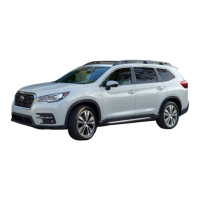
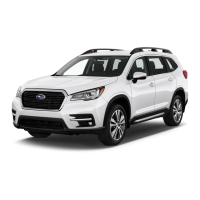




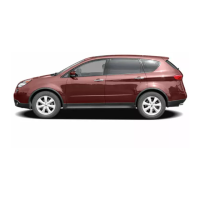

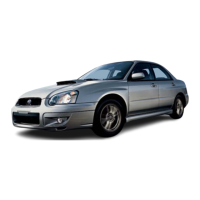
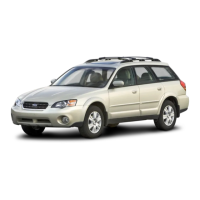
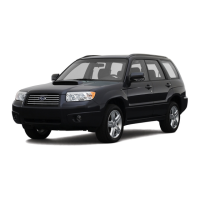
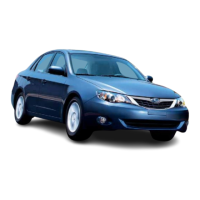
